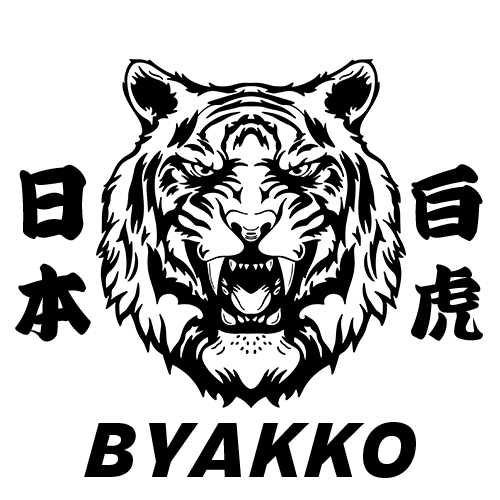A Complete Guide to the Charm of Kyoto Sashimono and Edo Sashimono

Among Japan’s traditional crafts, Sashimono is especially deep and full of fine skills.
Furniture and tools made by fitting wood together—without using nails or screws—look simple but are actually very precise. Their quality is often called “a symbol of Japanese attention to detail.”
This article explains, in an easy way, the differences between Kyoto Sashimono and Edo Sashimono. It also shows how to tell them apart and how they are used today. After reading, you may be able to guess, at an exhibition or antique market, whether an item is from Kyoto or Edo.
What is Sashimono? – The Beauty of a Unique Japanese Woodcraft
Sashimono is a Japanese craft where pieces of wood are joined like a puzzle to make furniture.
Its main feature is that no nails or screws are used. Instead, wood is fixed with pegs called hozo and with clever joints called shiguchi.
A special point is that Sashimono can be taken apart and put back together. Because no metal is used, the wood can “breathe,” and the item lasts longer. It has a charm that modern furniture rarely offers – you can repair and keep using it for many years.
The Origin of Sashimono
Sashimono began in the Nara and Heian periods, first for making Buddhist and Shinto items.
From the Muromachi to Edo periods, it became linked with the tea ceremony and town culture, changing from simple tools to works of art.
By the Edo period, Kyoto and Edo (Tokyo) each developed their own style. These two schools have been handed down to today.
Kyoto Sashimono – A World of Elegance and Art

Source: Women’s Traditional Crafts Exhibition
Kyoto Sashimono grew with refined arts such as the tea ceremony and incense ceremony.
Its focus is more on beauty and delicacy than on simple function. Many pieces, like display shelves, incense chests, and tea tools, are made as elegant objects, not just daily tools.
Items such as hearth frames, water shelves, or incense drawers used in a tea room go beyond their purpose and shine like works of art.
Because tea ceremony values calmness and wabi-sabi (quiet, simple beauty), Kyoto Sashimono makers learned to express this sense in their tools. Small shelves or boxes are made with great care, showing the owner’s taste. Kyoto Sashimono is praised as “craft that gives shape to the spirit of tea.”
Materials and finishes also add to its charm. Light, moisture-resistant paulownia is used for incense or writing boxes, while stronger woods like cypress or zelkova make shelves and tea utensils.
The finish often uses sur-urushi – thin coats of lacquer rubbed in to bring out the grain and protect the surface. Sometimes gold or carved designs are added, turning the piece into true art.
Edo Sashimono – A Craft that Balances Style and Use

Source: “Master Skills Passed Down from Edo”
Edo Sashimono grew from the idea that “things are valuable when used in daily life.”
Unlike Kyoto’s courtly or tea-culture roots, Edo pieces were made for merchants and samurai homes. They value practicality, strength, and a touch of simple style rather than luxury.
Examples include:
-
Choba-dansu (merchant’s chest) for money and books – a safe like today’s.
-
Suzuribako (inkstone box) for writers and scholars – a tool that also shows taste.
-
Naga-hibachi (long brazier) and writing boxes for letters or small items.
Edo Sashimono shines in making such tools durable and pleasant to use.
Its true beauty is often hidden. The surface may look plain, but inside are expert joints such as dovetail (ari-gumi tsugi) or butterfly keys (chigiri tsugi). Even if the outside seems one solid plank, several pieces fit together perfectly for strength.
This “beauty only experts notice” reflects Edo’s sense of iki – quiet, refined style. The mix of hidden elegance and daily comfort is its main appeal.
If Kyoto Sashimono is “woodwork at its most beautiful,” Edo Sashimono is “craft close to daily life.”
Differences Between Kyoto and Edo Sashimono
| Kyoto Sashimono | Edo Sashimono | |
|---|---|---|
| Culture | Court & tea culture | Merchant & samurai life |
| Style | Delicate, decorative | Simple, practical |
| Main uses | Tea tools, shelves, incense boxes | Chests, drawers, daily items |
| Techniques | Lacquer & carving | Hidden joints, precise fitting |
| Today | Enjoyed as art, decoration | Fits minimal modern interiors |
Easy Tips to Tell Them Apart
-
Look
-
With lacquer or carving → Kyoto
-
Plain and clean → Edo
-
-
Wood
-
Light (paulownia, cypress) → Kyoto
-
Heavier (zelkova, chestnut) → Edo
-
-
Use
-
Tea or incense tools → Kyoto
-
Chests or daily boxes → Edo
-
-
Structure
-
Inside also carefully decorated → Kyoto
-
Simple outside, clever inside → Edo
-
Glossary
-
Hozo: Peg-and-hole joint, like Lego pieces fitting snugly.
-
Shiguchi: General word for wooden joints; there are many kinds.
-
Sur-urushi: Lacquer rubbed in to show wood grain with a soft shine.
-
Ari-gumi tsugi: Dovetail joint, very strong.
-
Chigiri tsugi: Butterfly-shaped key set in wood to stop cracks and add decoration.
Conclusion – The Charm of Sashimono Linking Past and Present
Kyoto Sashimono is “craft perfected as beauty,” while Edo Sashimono is “craft for daily life.”
Their roots and uses differ, but both are treasures of Japanese skill, passed down for generations.
When added to modern homes, Kyoto pieces give calm elegance, while Edo pieces bring warmth and usefulness. The feel of real wood and the fine details of handwork give a “quiet richness” that mass-produced furniture cannot match.
